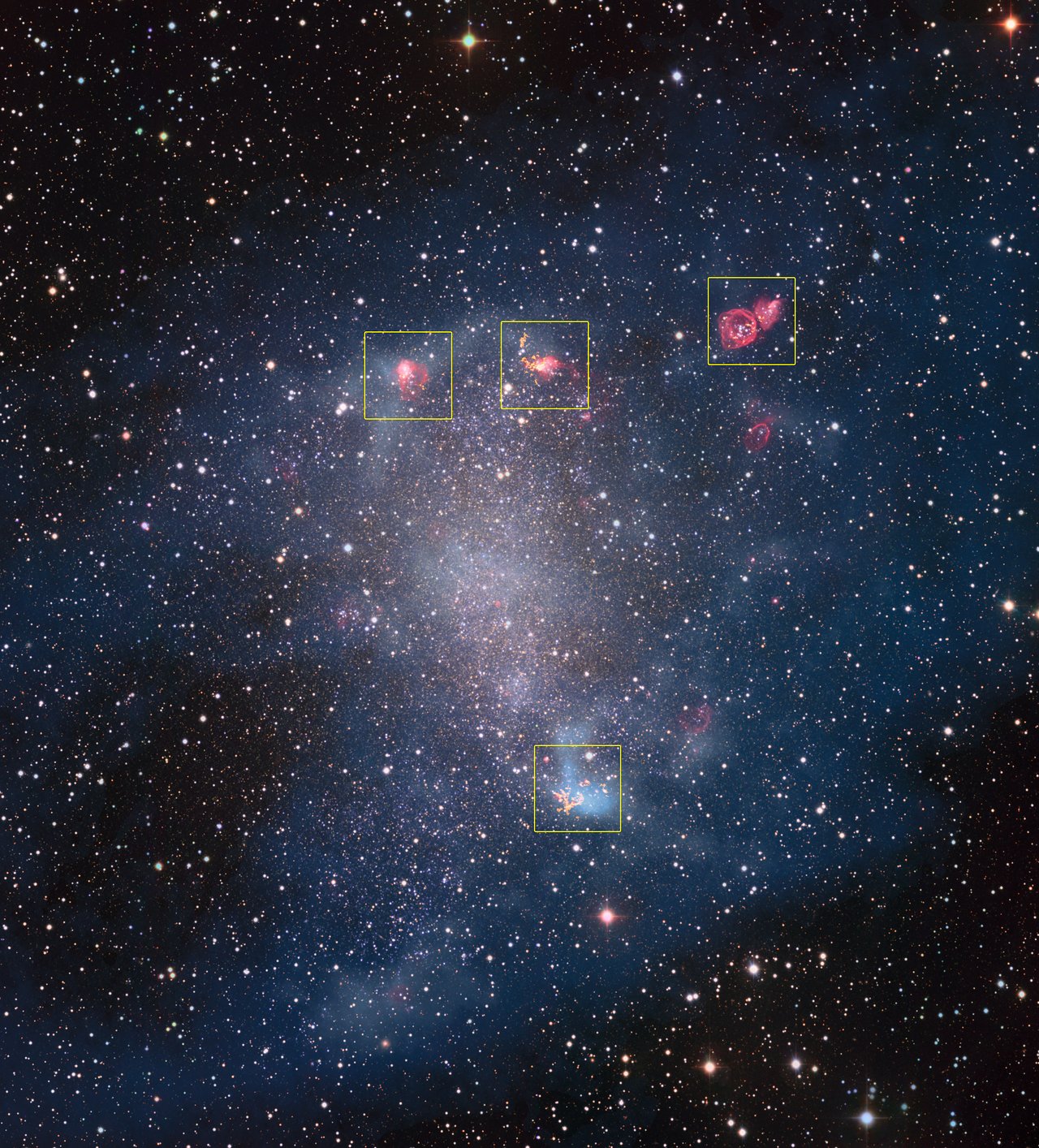ALMA nahlíží do srdce hvězdných školek | ESO Česko
http://www.eso.org/public/czechrepublic/images/potw1711a/?lang
Zdá se, že velké spirální galaxie se svými nápadnými svítícími rameny přitahují veškerou pozornost. Ale NGC 6822, nepravidelná trpasličí galaxie s příčkou,
dokazuje, že pravidelné spirální galaxie nemají monopol na galaktickou krásu. NGC 6822, které se také říká Barnardova galaxie, leží v souhvězdí Střelce
(Sagittarius) ve vzdálenosti 1.6 milionu světelných let a je plná oblastí tvorby hvězd.
Tento nový obrázek je kombinací starších pozorování pořízených kamerou WFI (Wide Field Imager) na 2.2m dalekohledu MPG/ESO na observatoři ESO La Silla a nových
dat z interferometru ALMA (Atacama Large Millimeter/submillimeter Array). Oblasti pozorované ALMou jsou na obrázku zvýrazněny a dají se prohlédnout v detailu.
Pozorování z dalekohledu ALMA odhalují s neuvěřitelným rozlišením strukturu oblaků obsahujících plyn, ze kterého se tvoří hvězdy. Z pozorování v naší vlastní
galaxii víme, že hvězdy se tvoří v hustých jádrech velkých oblaků molekulárního vodíku - v jediných místech, kde se plyn stane dostatečně chladným na to, aby
vlastní gravitací zkolaboval. Tyto podmínky podporují také tvorbu dalších molekul, např. oxidu uhelnatého, které jsou nenahraditelnou pomůckou astronomů při
detekování galaktického molekulárního vodíku.
Až donedávna byli astronomové schopní rozlišist oblasti tvorby hvězd pouze v Mléčné dráze, ale vysoké rozlišení ALMy otevírá okno do tvorby hvězd v jiných galaxiích.
Analýza dat ukázala, že, na rozdíl od naší galaxie, pozorované molekuly jsou soustředěny do malých, hustých jader plynu. To vysvětluje, proč bylo doposud tak těžké
pozorovat extragalaktické oblasti tvorby hvězd, obzvláště v málo hmotných galaxiích s nízkým obsahem těžších prvků. ALMA také zjistila, že se jádra v NGC 6822 chovají
velmi podobně hvězdným školkám v Mléčné dráze, což signalizuje, že fyzika tvorby hvězd v těchto malých galaxiích připomíná tu, kterou vidíme v naší galaxii.
